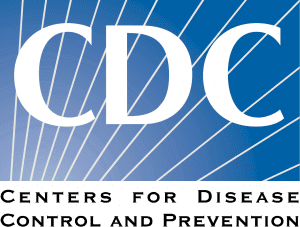Effectiveness of the Original Monovalent Messenger RNA Coronavirus Disease 2019 (COVID-19) Vaccination Series Against Hospitalization for COVID-19–Associated Venous Thromboembolism
Here they used a test-negative design to look at the impact of COVID-19 vaccines on those deep venous clots. They looked at 18,811 patients; 9,792 were admitted with COVID-19 (44% vaccinated), and 9,019 were test-negative controls (73% vaccinated). Among patients with COVID-19, 601 had VTE diagnosed by hospital day 28, of whom 170 were vaccinated. VTE was more common among unvaccinated than vaccinated patients with COVID-19 (7.8% vs 4.0%; P = .001). The VE against COVID-19 hospitalization with VTE was 84% overall (95% confidence interval, 80%–87%), and VE stratified by predominant circulating variant was 88% (73%–95%) for Alpha, 93% (90%–95%) for Delta, and 68% (58%–76%) for Omicron variants.
Demographic Variation in U.S. Outpatient Hydroxychloroquine and Ivermectin Use During the COVID-19 Pandemic.
Here they used insurance claims from the MedInsight Emerging Experience Research Database for 8.1 million patients from all fifty U.S. states to evaluate COVID-19-associated outpatient hydroxychloroquine and ivermectin use and spending throughout the public health emergency (January 30, 2020–May 11, 2023) versus pre–public health emergency rates. The combined overall hydroxychloroquine and ivermectin utilization rate was threefold higher in older versus younger adults. Ivermectin use was greater among patients with the highest versus the lowest degree of social vulnerability and in the southern U.S. versus other regions. To bring that home, two unproven treatments touted as COVID-19 treatments during the pandemic, hydroxychloroquine doubled and hydroxychloroquine and ivermectin increased by 10-fold, respectively, from January 30, 2020, to June 30, 2023.
Alleviation of COVID-19 Symptoms and Reduction in Healthcare Utilization Among High-risk Patients Treated with Nirmatrelvir/Ritonavir (NMV/R): A Phase 3 Randomized Trial
These are the results of a phase 2/3, double-blind, randomized (1:1) study that assessed oral NMV/r 300 mg/100 mg versus placebo every 12 hours for five days in high-risk, unvaccinated, nonhospitalized, symptomatic adults with COVID-19 from 343 sites across 21 countries. Among 2113 randomized patients enrolled from July 2021 through December 2021, 1,966 (NMV/r, n = 977; placebo, n = 989) were included in the prespecified analysis population (symptom onset ≤5 days, did not receive monoclonal antibodies). NMV/r significantly reduced times to sustained alleviation (median, 13 vs 15 days; hazard ratio = 1.27, P < .0001) and resolution (16 vs 19 days; hazard ratio = 1.20, P = .0022) through day 28 and significantly reduced the number of COVID-19‒related medical visits and the proportion of patients with such visits. Hospitalized patients treated with NMV/r had shorter stays, none required intensive care unit admission or mechanical ventilation, and all were discharged to home/self-care. Fewer NMV/r-treated patients required additional treatment for COVID-19. No NMV/r-treated patients died through week 24 compared with 15 placebo-treated patients.
COVID-19 Vaccination and Odds of Post–COVID-19 Condition Symptoms in Children Aged 5 to 17 Years
In this case-control study with 622 participants, vaccination was associated with a 57% decreased odds of one or more PCC symptoms and a 73% decreased odds of two or more PCC symptoms.
Situation Dashboards

World Health Organization (WHO)

Johns Hopkins University (JHU)

COVID-19 in US and Canada







